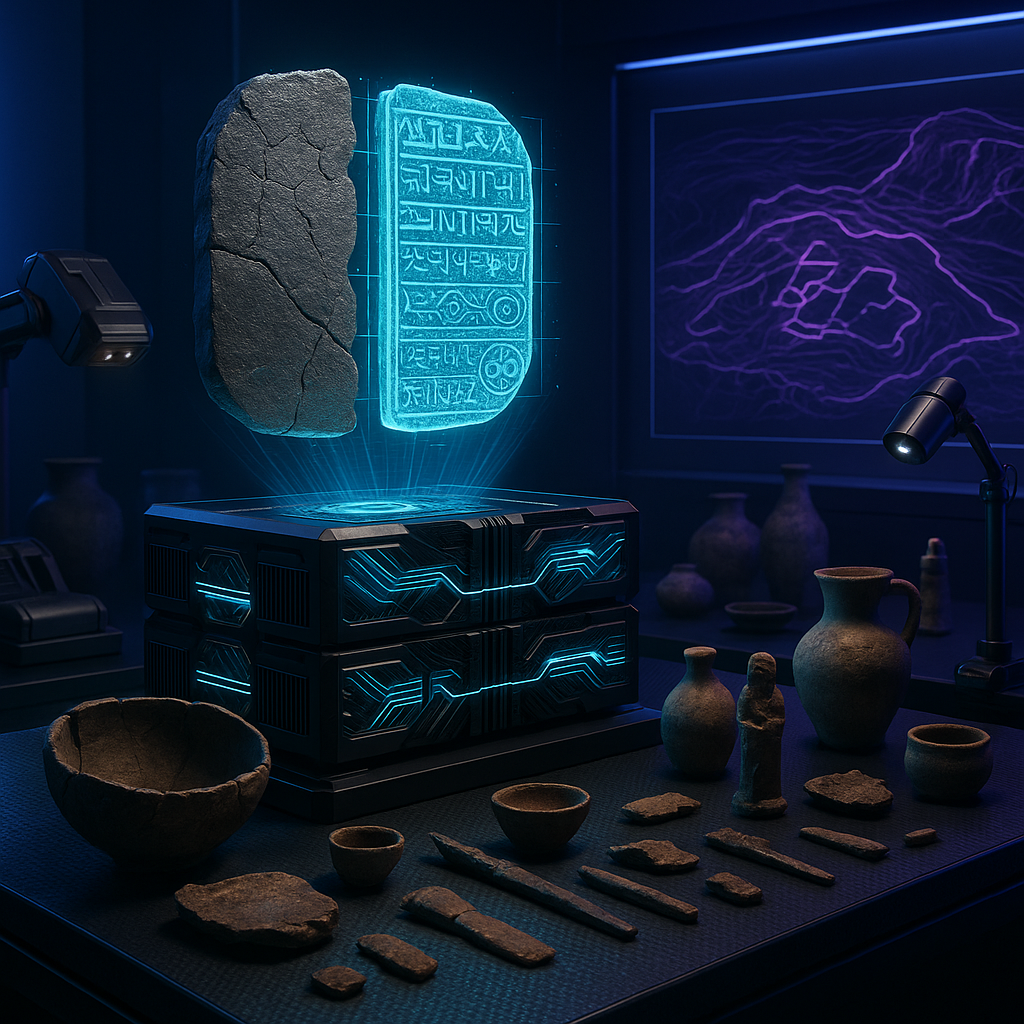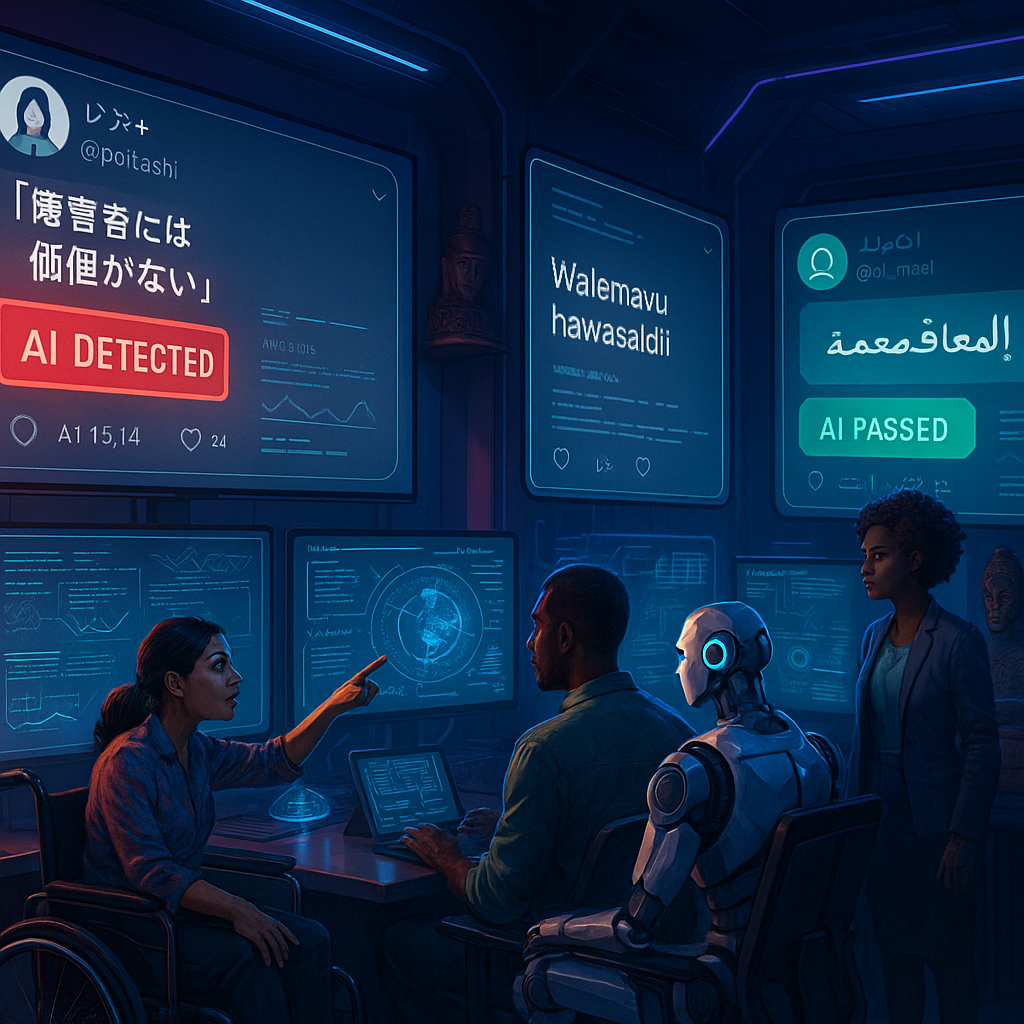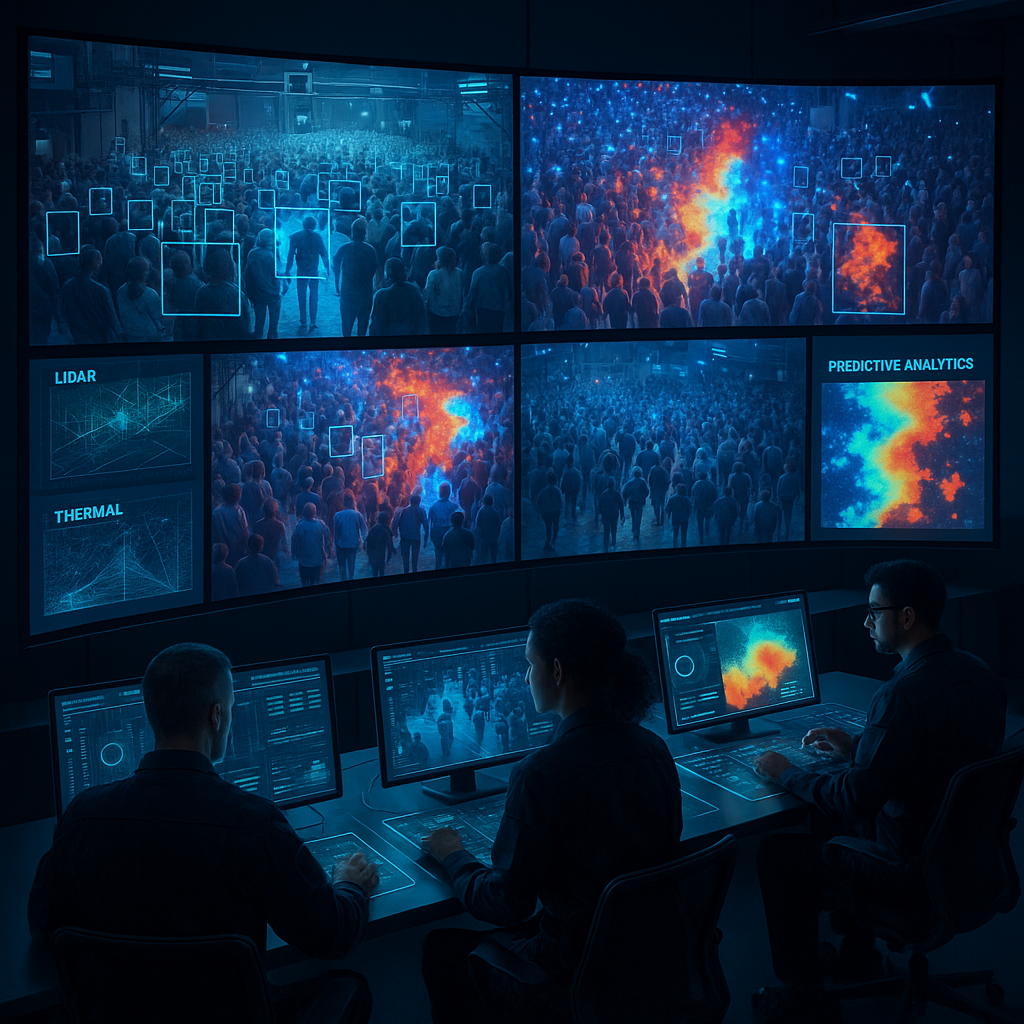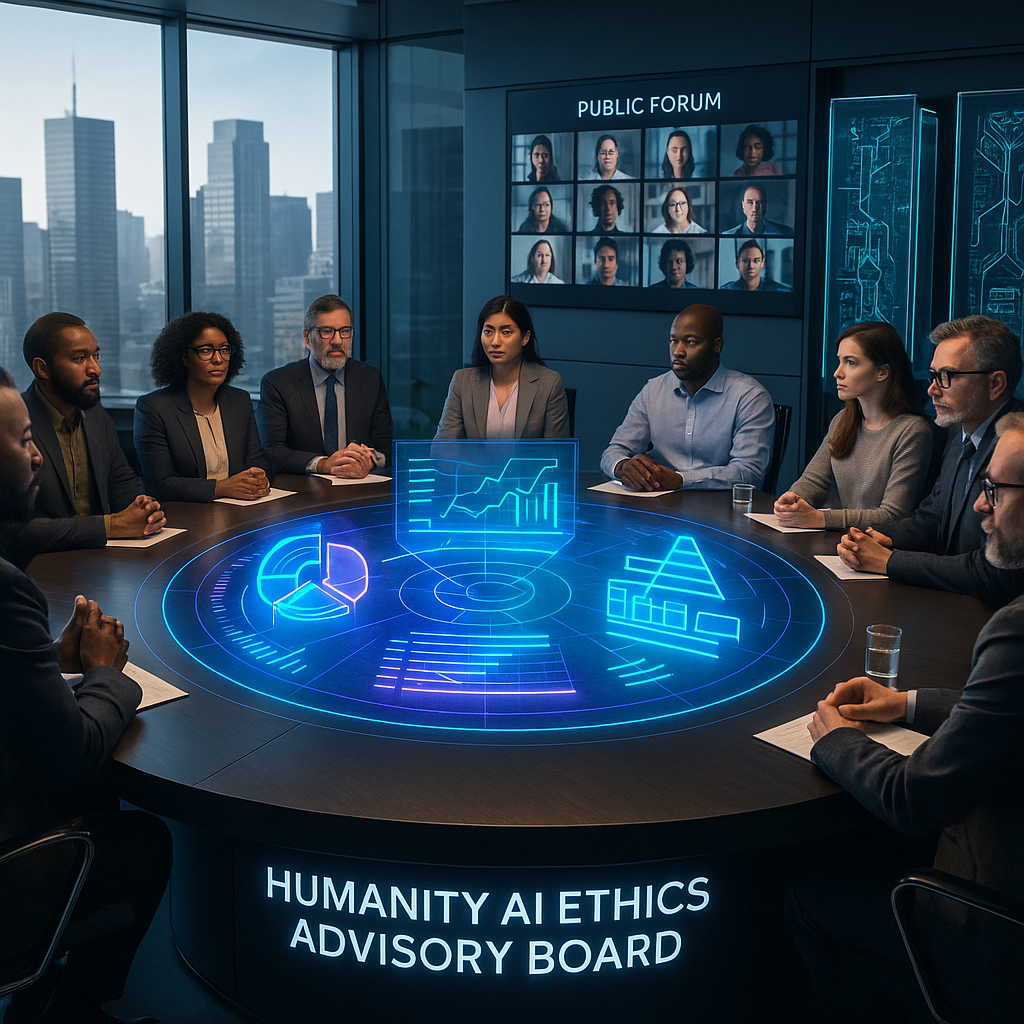Key Takeaways
Artificial intelligence is not just infiltrating the expected corners of academia. It is sparking unexpected revolutions, nowhere more striking than in the field of archaeology. In this once labor-intensive discipline, NVLink-powered supercomputing is shattering long-standing barriers in artifact analysis and historical reconstruction. These advances signify that hardware is now as crucial to discovery as the questions we ask. Here are the central forces reshaping archaeological research through next-generation computing:
- NVLink Spine unlocks unprecedented AI training speeds: By establishing ultra-fast and scalable GPU interconnections, NVLink eliminates the delays that once plagued large archaeological datasets. This makes real-time analysis and rapid iteration achievable on everything from elite clusters to desktop-class systems.
- Custom chip integration disrupts hardware monopolies: NVLink Fusion liberates supercomputing from closed hardware loops by enabling smooth integration of third-party processors and optical chips. This not only revolutionizes AI acceleration in archaeology, but is poised to ripple across fields such as environmental science, healthcare diagnostics, and advanced manufacturing.
- Desktop supercomputing democratizes discovery: The modular nature of NVLink-connected GPUs brings supercomputer-grade performance to individual research labs, small museums, and academic departments. This shift removes reliance on remote cloud servers, empowering local teams to process massive spatial and historical datasets without prohibitive costs or delays. It’s a model now gaining traction in education, law enforcement forensics, and digital humanities.
- Energy-efficient design underpins sustainable research: Cutting-edge NVLink architectures and high-speed optical links consume dramatically less power than traditional GPU clusters. This supports longer-term, eco-friendly scientific operations (not only in archaeology but also in climate science, financial modeling, and medical genomics).
- Advanced interconnects enable high-resolution digital reconstruction: With exceptional bandwidth and low latency, NVLink-based systems allow deep learning models to process volumetric scans, recreate delicate artifacts, and simulate ancient landscapes. This is transforming archaeological visualization and influencing medical imaging and urban planning.
- Strategic pivot toward the post-cloud era: As cloud infrastructure investment plateaus, Nvidia’s emphasis on open, customizable interconnects signals a future where edge devices, academic platforms, and bespoke computing solutions become leaders of innovation. This shift is shaping research strategies across domains from autonomous agriculture to regulatory compliance.
The accelerating evolution of NVLink and its embrace of hardware diversity are quietly rewriting the rules not just for archaeology, but for any field at the convergence of AI, big data, and historical insight. With these changes as a backdrop, let us uncover how such technologies are redefining exploration itself.
Introduction
Stone tablets and layers of sediment once jealously guarded the secrets of our past. Today, the keys to history rest in bandwidth, neural networks, and unprecedented computational power. Archaeology is entering a transformative phase as NVLink-based supercomputers blend lightning-fast AI hardware with specialized chip integration, opening frontiers previously relegated to science fiction. These innovations enable real-time artifact analysis, intricate digital reconstructions, and sustainable research workflows that redefine how we delve into ancient mysteries.
What differentiates NVLink is not brute force alone. It’s a re-engineering of the entire interplay between data, hardware, and discovery. By removing GPU bottlenecks, embracing third-party accelerators, and delivering supercomputing prowess to the desktop, NVLink is democratizing breakthroughs and shifting research away from distant cloud monopolies. The convergence of scalable AI hardware, optical chip innovation, and modular architectures is rapidly changing the landscape of archaeological practice. Let us examine how these breakthroughs are being realized in archaeological computing, and where they are likely to take us next.
Stay Sharp. Stay Ahead.
Join our Telegram Channel for exclusive content, real insights,
engage with us and other members and get access to
insider updates, early news and top insights.
 Join the Channel
Join the Channel
The Evolution of NVLink Technology in Archaeological Computing
NVLink has redefined the possibilities within archaeological computing by transforming how GPUs communicate and cooperate. The third-generation NVLink system now supports up to 900 GB/s of bidirectional bandwidth between GPUs. That’s a sevenfold leap over conventional PCIe architectures. For computational archaeology, this means massive high-resolution imaging tasks and complex 3D reconstructions retain data integrity even across distributed systems.
The impact is tangible. The British Museum’s Digital Research Lab recorded a 40% decrease in processing time for large artifact visualization projects. Equally significant, NVLink allows researchers to maintain coherent memory access over multiple GPUs, making it possible to run distributed AI models on fragmented or incomplete archaeological datasets. This is a breakthrough now echoed in climate modeling, genomics, and computational chemistry.
NVLink Fusion and Custom Chip Integration
NVLink Fusion signifies a decisive shift in computing architecture, ushering in an era marked by openness and flexibility. As a protocol, NVLink Fusion allows seamless integration of highly specialized processors that exist outside NVIDIA’s proprietary environment. Research organizations in various fields, from archaeology to healthcare, are capitalizing on this adaptability to create custom accelerators for critical tasks such as:
- Pattern recognition for ancient ceramics or textiles
- Automated stratigraphic analysis in geology and archaeological surveys
- High-speed chemical composition scanning for artifact conservation
- Real-time, scalable 3D reconstruction both in the lab and in the field
- Rapid diagnostic imaging in healthcare and threat detection in security
For example, the Max Planck Institute for Archaeological Science has developed custom chips optimized for ground-penetrating radar diagnostics. These integrations have led to a 65% increase in subsurface feature detection accuracy, a model inspiring similar custom solutions in environmental monitoring and disaster response.
Supercomputer Applications in Modern Archaeology
The modern application of supercomputing in archaeology is undergoing a dramatic evolution. Once restricted to centralized computing centers, modular NVLink-powered systems now bring advanced capabilities to universities, heritage organizations, and even individual researchers.
Distributed AI Model Training
Distributed AI model training, where many GPUs work in parallel, has unleashed powerful capabilities. Recent projects showcase this new standard:
- The Digital Petra Project used interconnected GPU clusters to process 50 terabytes of photogrammetry data in less than three days. This generated the highest-resolution 3D models of Petra’s monuments ever produced.
- Cambridge University’s Archaeological Computing Laboratory employed distributed AI to reconstruct artifact fragments with remarkable speed, modeling break patterns and likely restorations in real time.
- The Mediterranean Archaeology Database adopted adaptive machine learning across multi-GPU environments for fine-grained ceramic classification—a practice now mirrored in art authentication and plant phenotype analysis.
Beyond archaeology, similar distributed workflows now accelerate cancer genomics, financial risk modeling, and personalized educational analytics. It’s clear that these methods have far-reaching relevance.
Energy Efficiency and Sustainable Computing
As the appetite for computation grows, so does the demand for energy efficiency. Archaeological research centers are leading by example. NVLink’s advanced power management features have brought about a 30% reduction in electricity consumption without sacrificing performance. These gains are especially critical for extended computational tasks such as large-scale 3D terrain modeling or high-resolution time series analysis.
Optical Chips for Historical Reconstruction
The adoption of optical chips is setting new standards for archaeological and related scientific computing. Key advantages of these processors include:
- Exceptionally low latency, supporting real-time visualization in the field
- Diminished power needs, facilitating mobile laboratory setups or remote expeditions
- Superior parallel processing, ideal for high-throughput imaging or simulation
- Enhanced precision, leading to higher accuracy in multispectral or hyperspectral data collection
The Getty Conservation Institute’s early deployment of optical chips resulted in a 90% decrease in processing time for multispectral manuscript analysis. This caught the attention of research groups specializing in environmental remote sensing and astrophysical data interpretation.
Impact on Research Methodologies
The latest advances in AI hardware are transforming how archaeologists (and a growing number of other researchers) approach data analysis. Researchers can now process massive amounts of raw data with heightened speed and fidelity, enabling more nuanced and comprehensive archaeological interpretations. The University of Oxford’s Archaeological Computing Research Group, for example, has reported moving projects from month-long computation cycles to completion in under a week.
Adaptive Learning Systems
AI-powered adaptive systems, fueled by high-performance hardware, now take on increasingly complex responsibilities:
- Dynamically adjusting processing parameters based on the changing conditions of artifacts or field samples
- Automatically identifying and mapping patterns across enormous, diverse datasets
- Generating predictive site preservation models, supporting conservation strategies
- Optimizing workflows and computational resource allocation, yielding gains in both speed and collaborative efficiency
The British Archaeological Survey notes a 45% increase in successful site identifications and attributes this leap to AI-driven predictive modeling. Comparable gains are now observed in fields like urban planning, agricultural yield forecasting, and digital forensics.
Future Directions and Cross-Disciplinary Applications
The migration of NVLink and custom integration from specialized research to broader application spaces is already underway. Museums are now employing these technologies for advanced digital preservation. Cultural heritage agencies conduct virtual reconstructions with unmatched fidelity. Educational institutions create interactive, data-rich learning environments that transcend traditional teaching tools.
Moreover, the scalability and openness of modern AI hardware hold promise for diverse applications, from rapid paleontological modeling and legal document automation to climate change simulations and individualized healthcare analytics. The revolution in archaeological computing thus foreshadows a broader transformation in how institutions across all sectors harness data-driven discovery while maintaining sustainable practices.
Conclusion
The relentless pace of NVLink’s evolution has not only expanded the horizons of archaeological research. It has profoundly reshaped the discipline’s foundation. Gains in bandwidth, memory coherence, and modularity have shattered previous constraints on imaging and computational analysis, allowing scholars to reconstruct and interpret history with astounding detail and speed. The advent of NVLink Fusion and optical chip integration marks a wider shift toward open, adaptable, energy-efficient infrastructure. This transition empowers researchers to engineer bespoke tools tailored to the unique challenges of their domains.
Stay Sharp. Stay Ahead.
Join our Telegram Channel for exclusive content, real insights,
engage with us and other members and get access to
insider updates, early news and top insights.
 Join the Channel
Join the Channel
No longer bound by old limits, archaeologists now wield a digital arsenal that collapses research timelines from months to days and elevates the role of adaptive AI in uncovering hidden patterns and predicting undiscovered sites. These advancements—quickly adopted by museums, conservationists, educators, and cross-disciplinary innovators—affirm that the stakes of advanced computing reach far beyond the archaeological trench.
Looking ahead, institutions that leverage the adaptability and power of these technologies, investing not just in tools but also in strategies that anticipate the ever-shifting demands of discovery, will become the trailblazers in research, preservation, and education. The true challenge is not whether these digital breakthroughs will alter our understanding of the past. They already have. The next era will be defined by the creativity, foresight, and ethical consideration with which we wield these new powers to illuminate the stories still waiting to be found.





Leave a Reply